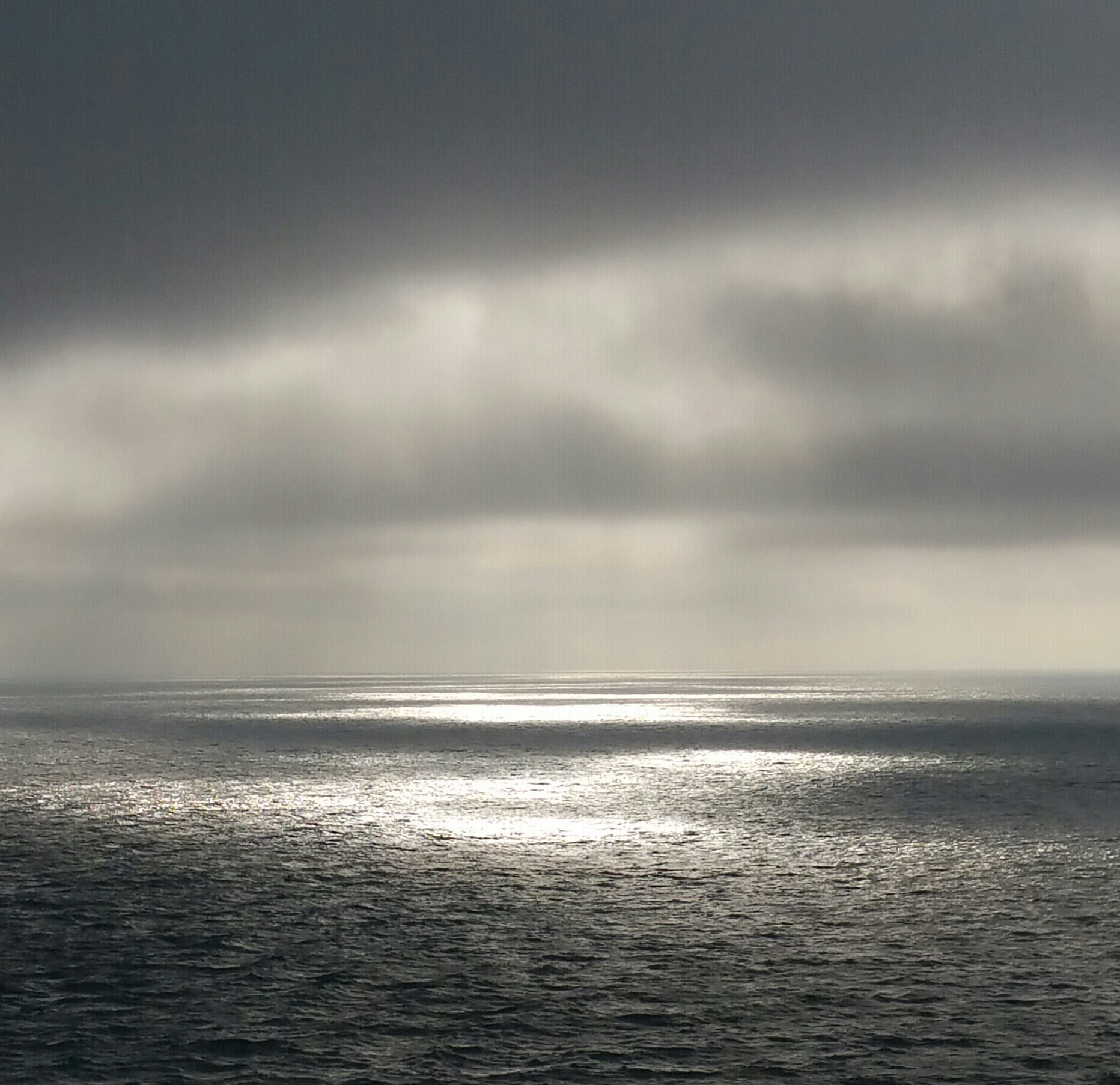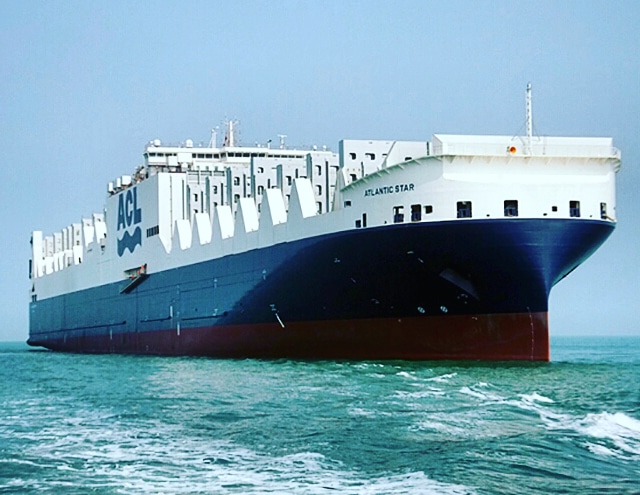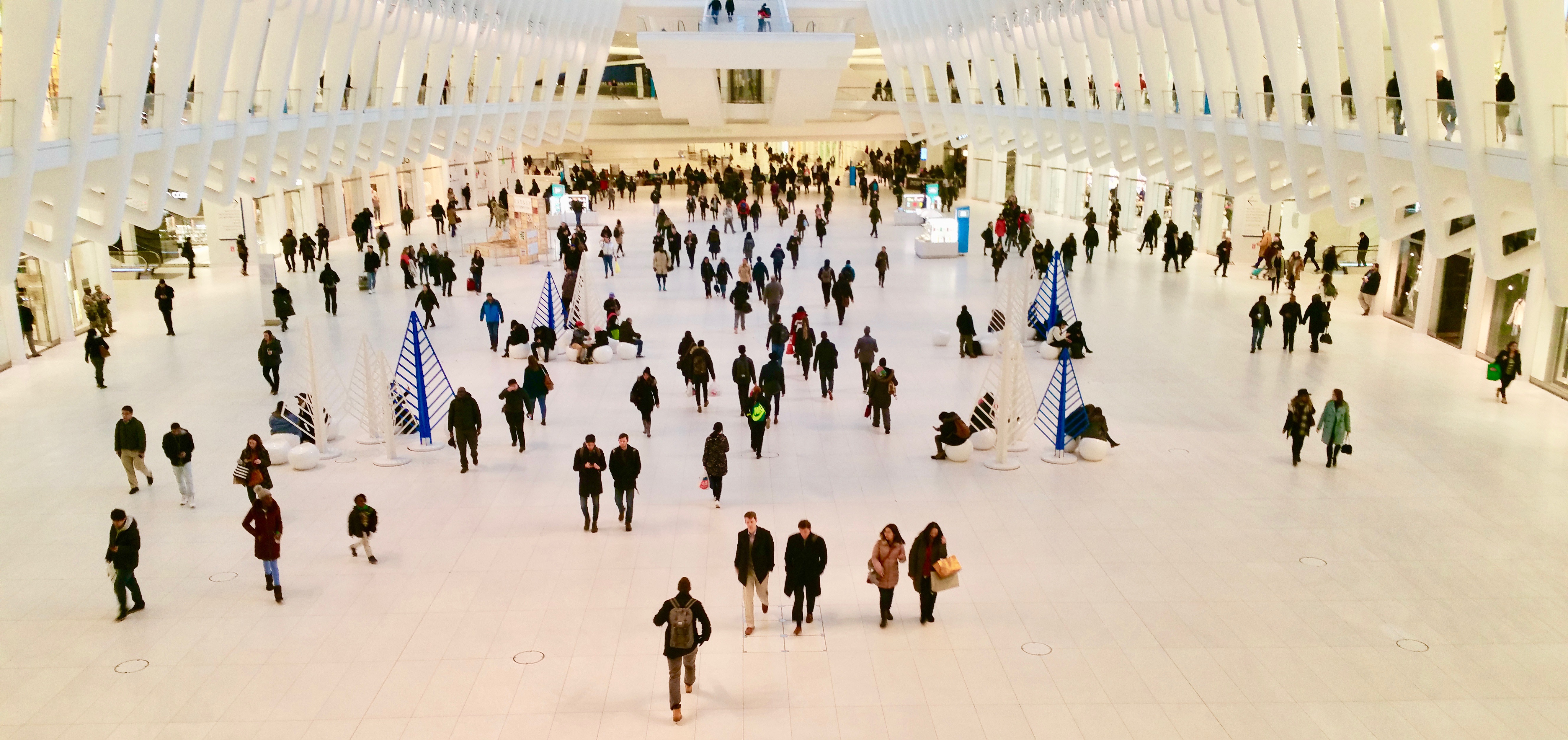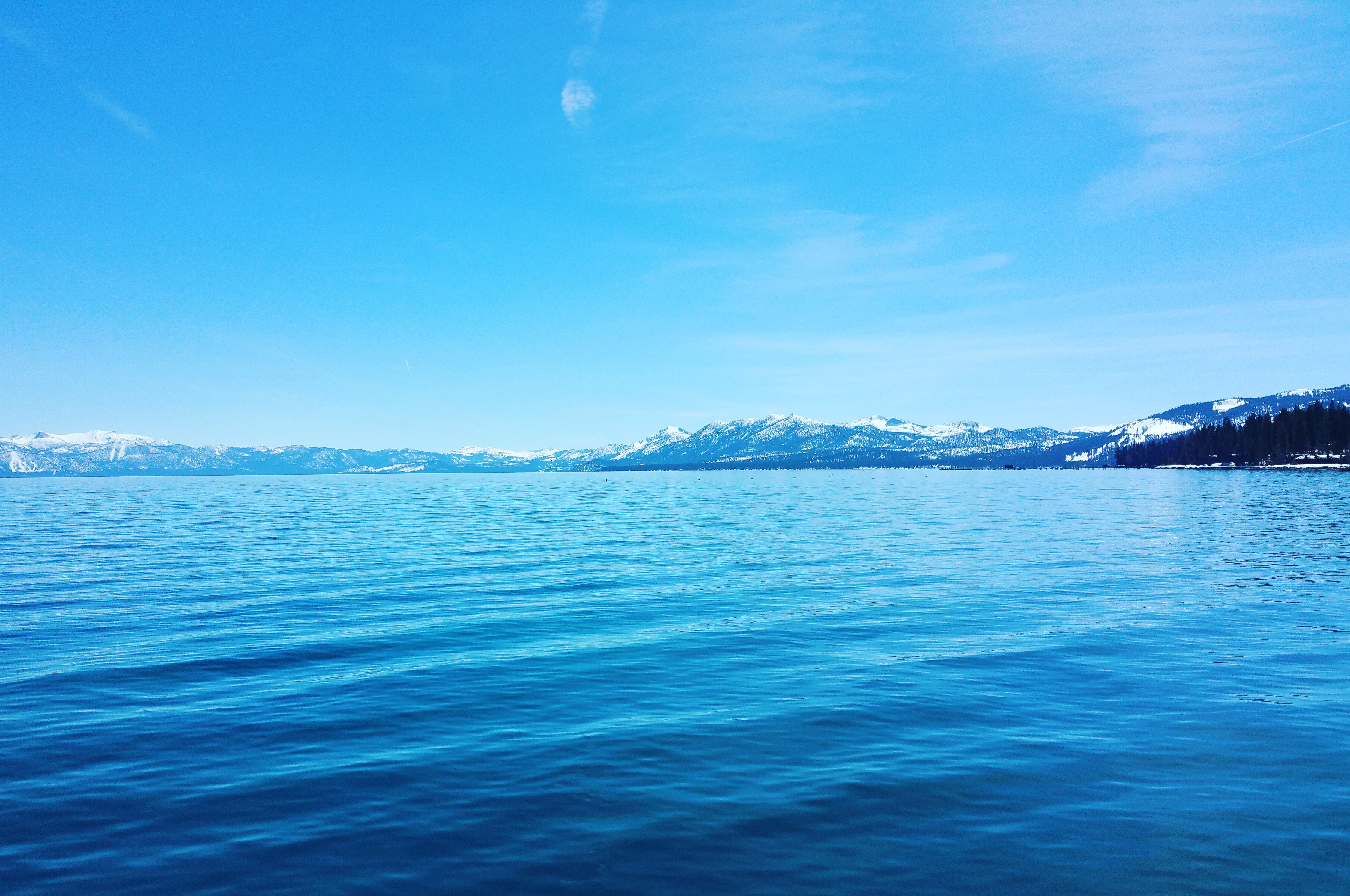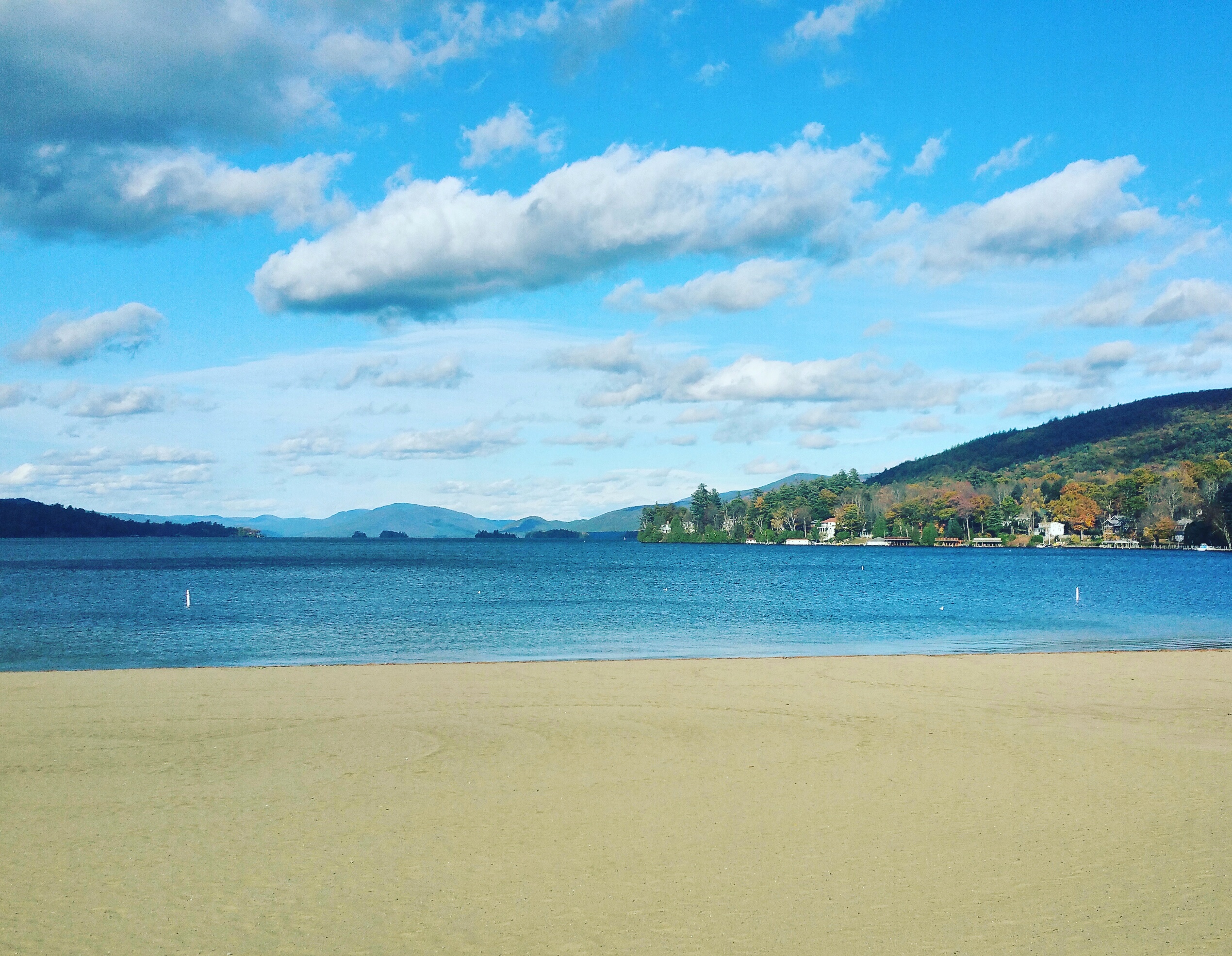The modus operandi for a cargo voyage is to get freight to it’s destination as quickly and cheaply as possible. But as a passenger on a container ship, the journey is of much greater interest. That was certainly the case for me, as I sailed from New York to Liverpool, via Baltimore, Portsmouth and Nova Scotia.
This is the second of a two-part post, recalling my voyage across the Atlantic Ocean on a container ship.
Trans-Atlantic Cargo Voyage
Watching the last slither of Nova Scotia sink beneath the horizon conjured up a little nervous excitement. The enormity of the voyage was now revealed in its entirety. Under darkening skies, the North Atlantic Ocean loomed large. It would be, weather permitting, an eight day crossing to Liverpool.
That feeling of anxiety, and learning to overcome it, was exactly why I was riding a cargo ship across the Atlantic Ocean. The challenge was to experience how it felt to completely relinquish control for a prolonged period of time, and learn how to cope with that. Heading out into a vast ocean was as good a way as any of creating those conditions. You cannot turn back when riding a cargo ship.
Mother nature sent her first oceanic phenomenon on that first night. Just off the coast of Newfoundland, Canada, is an infamous body of water named The Grand Banks; so called because of what lies beneath. Great underwater plateaus rise to around 300 feet beneath the ocean’s surface, resulting in a compression of water. This occurs just at the point where the cold Labrador Current from the north meets the much warmer Gulf Stream from the south. The result is often messy sea conditions and a reputation as the foggiest place on the planet. The Grand Banks are also infamous because they are adjacent to where the Titanic went down. Eighty years later, the Andrea Gale, the fishing trawler which inspired the movie The Perfect Storm, also floundered in these waters. So, for the first three days out of of Nova Scotia, we sailed on a heavy swell, through fog so dense that it was impossible to see the front of the ship. It was so surreal (and a little worrying) to see the front starboard corner of the ship drop into a foggy abyss; not knowing how far it would sink before correcting itself. Even at midday, it was darkish, silent and a little eerie. Only the periodic lament from the huge fog horn on the bow broke the silence. And still we sailed onwards.

Looking forward, but the ship’s bow is lost in the fog
In the absence of sea views, internet or phone connection, cabin fever and boredom are unrelenting foes which must be kept at bay. But boredom, I learned, is a perception. The down time aboard the ship offered ample opportunities to write, and more importantly, to meditate. When I felt boredom nipping at my consciousness, I immediately called to mind the frenetic lifestyle in New York City. This gave a better perspective, and led to an appreciation of the silent nothingness aboard the Atlantic Star.
Cargo ship travel consists of skeletal routine, and little else. Three hearty meals a day provide some structure, but the remaining time is free time. For those so inclined, the opportunity to completely switch off, including digital detox, is the main attraction of traveling on a container ship. For those who need to be entertained and kept busy, a voyage might seem like slow torture. Thankfully, I am the former.
Voyage Through the Dead Zone
On the third night at sea, Jim (a fellow passenger from Montana) and I made our now nightly visit out onto deck to take in the fresh sea air. As we climbed the external stairway to the upper deck, for the first time on our voyage the fog rolled back, revealing the most spectacular night sky. Away from the artificial light of towns and cities, our vantage point revealed thousands of extremely bright stars. They speckled the entire sky from one horizon to the other. It felt like we might be at the bottom of a recently shaken snow globe. The star filled sky was dissected by the The Milky Way, which formed an arc right over the ship. I watched shooting stars and even got to see the International Space Station pass overhead. It was tranquil beauty on a grand scale; a demonstration of how vast the earth is, but yet, how minuscule that vastness is in comparison to the infinity of the universe.
In most graphical representations of the night the Titanic went down in the North Atlantic, the scene is presented under an unusually bright starry sky. It is particularly apparent in James Cameron’s 1999 movie Titanic. I was always of the opinion that this night sky was greatly over exaggerated. Maybe it is to a certain extent. But there is no doubt that in this part of the Atlantic, if the fog clears, the stars shine brighter, and are visible right the way down to the horizon in all directions.

A depiction of a bright night sky, under which the Titanic floundered in the early hours of April 15th 1912. Image Source: Ultimate Titanic.
Stimulated by the magnitude of the night sky, I paid a visit to the bridge to talk with the chief officer about our location. At that point, we were in what is known as ‘The Dead Zone’. We were between 700-800 miles from the nearest land, ship or communications. Even the satellite communications system was down at that point. We were beyond the point where the coastguard could swoop down and save us. In an emergency situation, even the closest ship would take the most of two days to reach us.
Beneath the hull was 20,000 feet of ocean water; vast mountain ranges and valleys which man has yet to see, other than on computer screens. Those who bemoan the fact that the entire planet has been explored, would do well to take a slow voyage across the ocean. Again, the magnitude of the voyage, the expansiveness of the ocean and the infinite mysteries of the universe brought on a strangely calm feeling when combined with meditation. There is a relationship between meditation and the ocean which is incredibly strong, beautifully natural, and quite unexplainable.
With the fog now behind us, every walk out onto the deck revealed a beautiful seascape. Broken low cloud provided a polka dotted filter for the sun, which cut through at different intensities in different places. As it did so, the sunbeams cast a wonderful pattern across the surface of the water. Mirroring the sky above, some patches were grey and dull, while others sparkled brightly against the light from our closest star. The three days spent sailing through the eastern reaches of the north Atlantic Ocean were peaceful in a way that words simply cannot convey.

Brighter skies were more frequent on the eastern section of our north Atlantic voyage.
To see nothing but water against a 360 degree horizon is as difficult to process as it is serene. The magnitude of the ocean is impossible to grasp, even when crossing it on a large ship. One day as I stood in thoughtless contemplation, I noticed a lone bird sitting on the surface of the ocean. How it got there, where it nests, and how it survives in the dead zone is a quandary I have yet to solve.
The ocean swell remained moderate right the way across the Atlantic. By night it rocked me to sleep. By day, being so high above the center of the ship on the upper deck, it was a little disorienting to be out of earshot of the engine to the stern and the crashing of the large Atlantic waves against the bow. Disorienting, but nice. Thankfully my sea legs held up well. I later learned from the captain, that we had weaved a narrow passageway between two large storms right the way across the ocean. We got lucky. In silence I would stand, hand on rail, as the huge ship pitched and rolled, heading steadily eastwards towards the coast of Ireland.
One Last Onward Voyage!
After six thoroughly enjoyable days and nights at sea, I awoke two hours before dawn to again go out on deck. This time, the mission was not to admire the enormity of the Atlantic Ocean. On the port side, I stood staring toward the horizon. Finally I saw what I was hoping to see. Just barely visible between the blackness of the ocean depths and the cloudy night sky were the unmistakable beams from several lighthouse; each with their own distinctive pattern. The lights of Ireland were calling me home! It had been 10 long months since I had seen the beautiful Wild Atlantic Way on the western coast of Ireland.
By far the most impressive of the light beams, and indeed the first to pierce the dark horizon, was that of Fastnet. Often referred to as Ireland’s tear drop, because it was the last point on the homeland that many immigrants saw en route to America, Fastnet stands mightily strong against the many Atlantic storms bound for Ireland. Content that I had finally laid eyes on Ireland, I returned to bed. When I woke for breakfast at 6:45, daybreak revealed the southern Irish coast in all of it’s splendor. But I was to pass by my homeland. Getting there would require another shorter voyage.
After breakfast, I was treated to a tour of the ship, first to the stern, where we watched up to twenty dolphins playfully surf in the ship’s wake, and then to the bow, where I leaned out through a mooring porthole to peer down to where the ship was cutting through the water. Both perspectives were thoroughly enjoyable. I was even given a tour through the engine room, and some of the cargo holds below deck, where trucks and diggers and enormous machines were tied to the deck. Through the afternoon, we edged further along on the Celtic Sea, before rounding Carnsore Point and entering the surprisingly calm Irish Sea. By sundown, the Atlantic Star was anchored off the mouth of the River Dee, waiting for the Mersey pilot to guide us into Liverpool.
The following morning I woke early, and upon looking out through my cabin window, saw thousands of shipping containers. We had arrived in Liverpool. That night I completed my journey to Ireland by taking a taxi out of Liverpool docks, a train to Chester, a connecting train to Hollyhead, and finally a ferry to Dublin. I had a date to keep; my wife Yesi was arriving by plane from New York, into Dublin Airport. How strange that she had made a journey in six hours that had taken me 8 days.

Thousands of shipping containers greeted our arrival in Liverpool docks.
But while I was disembarking in Liverpool, the crew, many of whom are Filipino, were busy trying to connect to the internet to make Skype calls to their wives and children on the other side of the world. Hearing the children excitement at seeing their fathers on the computer screens would bring a tear to even the coldest eye. I had taken a two week cargo cruise for fun, but these brave men were preparing to turn around and do it all over again. They are at sea for around 9 months at a time. Every time I now see products shipped from one part of the world to the other, I think on those hard-working men and the sacrifice they make to put goods in our stores. They really are the heroes of the seas.

A Filipino crewman passes a sleepless night on the ocean by watching a DVD in the mess-room.
Traveling on a cargo ship is by no means efficient, but it certainly is enjoyable. In a world which is now constantly connected, constantly buzzing with activity, generating stress and little time to reflect, hitching a ride on a cargo ship offers a throwback to the days when travel took time, and involved disconnecting from both origin and destination, with little choice but to sit back and enjoy the journey.
Would I travel on a cargo ship again? Absolutely! But I will probably do it in summer, and pick a different route next time. There is a line from south eastern Australia up through Asia and into the Indian Ocean. It then passes through the Suez Canal to the Mediterranean, and after rounding the Iberian peninsula, terminates at Southampton on the south coast of England.
But the voyage which is really calling my attention is the trans-Pacific from California to Japan. Were I to take that voyage, and then connect to China by ferry, I could then ride the trans-Siberian, or trans-Manchurian railroad all the way to Moscow, and then connect via St Petersburg to Paris. From there, the channel tunnel train would take me to London, from where I could ride one last train to Liverpool. Having cycled across America in 2016, and crossed the Atlantic Ocean in 2018, the Pacific voyage and trans-Siberian railroad would complete a circumnavigation of the northern hemisphere without having taken a plane. I’ll keep you posted!
